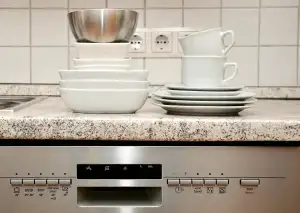Home Safety: Can You Safely Microwave Styrofoam? Unraveling the Mystery

Microwaving food has become a convenient and time-saving method for many households. However, there is often confusion surrounding the safety of microwaving certain materials, particularly Styrofoam. In this article, we will delve into the topic to unravel the mystery and provide you with essential information on whether it is safe to microwave Styrofoam. By understanding the composition of Styrofoam and potential risks involved, we can make informed choices for a safer kitchen experience.
Understanding Styrofoam: What is it Made of?
Styrofoam, often used as a generic term for expanded polystyrene foam, is a lightweight and insulating material commonly found in food packaging. It is made from a petroleum-based plastic called polystyrene, which is formed into a foam-like structure through a process of expanding and molding.
The key component of Styrofoam is the polymer known as polystyrene, which consists of long chains of styrene molecules. These chains are intertwined to create a rigid and durable material that can be easily shaped into various forms. Additionally, Styrofoam contains small pockets of air within its structure, giving it excellent insulation properties.
It's important to note that not all foams are created equal. While Styrofoam is commonly used for food containers and disposable cups, there are different types of foam materials available in the market. Some foams may be labeled as microwave-safe or specifically designed for heating purposes, while others may not be suitable for use in the microwave.
Understanding the composition of Styrofoam helps us evaluate its safety when exposed to heat. In the following sections, we will delve deeper into the potential risks associated with microwaving Styrofoam and explore safe alternatives for heating food.
The Risks of Microwaving Styrofoam: Potential Dangers
Microwaving Styrofoam can pose potential dangers to both your health and safety. When exposed to high temperatures, Styrofoam can release harmful chemicals into your food. One such chemical is styrene, which has been classified as a possible human carcinogen by the International Agency for Research on Cancer.
Furthermore, microwaving Styrofoam can cause it to melt or warp, creating a risk of burns or fires. The heat generated in the microwave can cause the foam to break down and release toxic fumes. Inhaling these fumes can lead to respiratory issues and other health problems.
It's important to note that not all types of Styrofoam are created equal. Some may be labeled as microwave-safe, indicating that they have been tested and deemed suitable for use in the microwave. However, it's always best to err on the side of caution and avoid microwaving any type of Styrofoam unless specifically labeled as safe.
To ensure your safety, it's recommended to transfer food from Styrofoam containers into microwave-safe glass or ceramic dishes before heating them in the microwave. This will help minimize any potential risks associated with microwaving Styrofoam and allow you to enjoy your meals without worry.
Debunking Common Myths: Separating Fact from Fiction
There are many myths surrounding the safety of microwaving Styrofoam, but it's important to separate fact from fiction. One common myth is that microwaving Styrofoam releases harmful chemicals into your food. However, this is not true. Styrofoam is made from expanded polystyrene, which is a type of plastic that does not leach harmful chemicals when heated.
Another myth is that microwaving Styrofoam causes it to melt and contaminate your food. In reality, Styrofoam can withstand high temperatures and will not melt in the microwave as long as it is labeled as microwave-safe. It's important to check for this label before using any container in the microwave.
Some people also believe that microwaving Styrofoam can cause fires or explosions. This is simply not the case. While it's true that some types of foam containers can ignite if they come into direct contact with a heating element, this is extremely rare and unlikely to happen in a regular household microwave.
To ensure safety, always follow the manufacturer's instructions and guidelines when using any type of container in the microwave. If you're unsure about whether a particular container is safe for use in the microwave, it's best to err on the side of caution and choose an alternative option.
By debunking these common myths, we can make informed choices when it comes to microwaving food in Styrofoam containers. Remember to always prioritize safety and use microwave-safe containers for heating your food.
Safe Alternatives: Microwave-Safe Containers for Heating Food
When it comes to heating food in the microwave, it's important to choose the right containers to ensure safety. While Styrofoam is not recommended for microwaving due to potential health risks, there are plenty of safe alternatives available. Look for containers labeled as "microwave-safe" or those made from glass, ceramic, or microwave-safe plastics. These materials are designed to withstand the heat and won't release harmful chemicals into your food. Investing in microwave-safe containers will give you peace of mind knowing that you're making a safe choice for both yourself and your family.
Tips for Microwaving Food Safely: Best Practices to Follow
When it comes to microwaving food safely, there are a few best practices you should follow. First and foremost, always use microwave-safe containers made of glass or ceramic. These materials are designed to withstand the heat generated by the microwave without releasing harmful chemicals.
Avoid using plastic containers, especially those labeled as not microwave-safe or made from low-quality plastics. Even if they claim to be microwave-safe, it's better to err on the side of caution.
Additionally, make sure to cover your food with a microwave-safe lid or wrap to prevent splattering and retain moisture. This will help ensure even heating and reduce the risk of hot spots.
Remember to stir or rotate your food during the microwaving process to promote uniform cooking. This will help eliminate any cold spots that may harbor bacteria.
Lastly, always follow the recommended cooking times and power levels specified in your microwave's manual. Overcooking can lead to food becoming too hot and potentially causing burns.
By following these tips, you can enjoy the convenience of microwaving your food while prioritizing safety in your kitchen.
In conclusion, it is important to make informed choices when it comes to microwaving Styrofoam in order to maintain a safe kitchen environment. While there are risks associated with microwaving Styrofoam, such as the potential release of harmful chemicals, debunking common myths and understanding safe alternatives can help mitigate these dangers. Opting for microwave-safe containers made of glass or ceramic is a wise choice to ensure food is heated safely. By following best practices and being aware of the materials used in our kitchen, we can prioritize home safety and enjoy our culinary adventures without compromising our health.
Published: 02. 12. 2023
Category: Home



